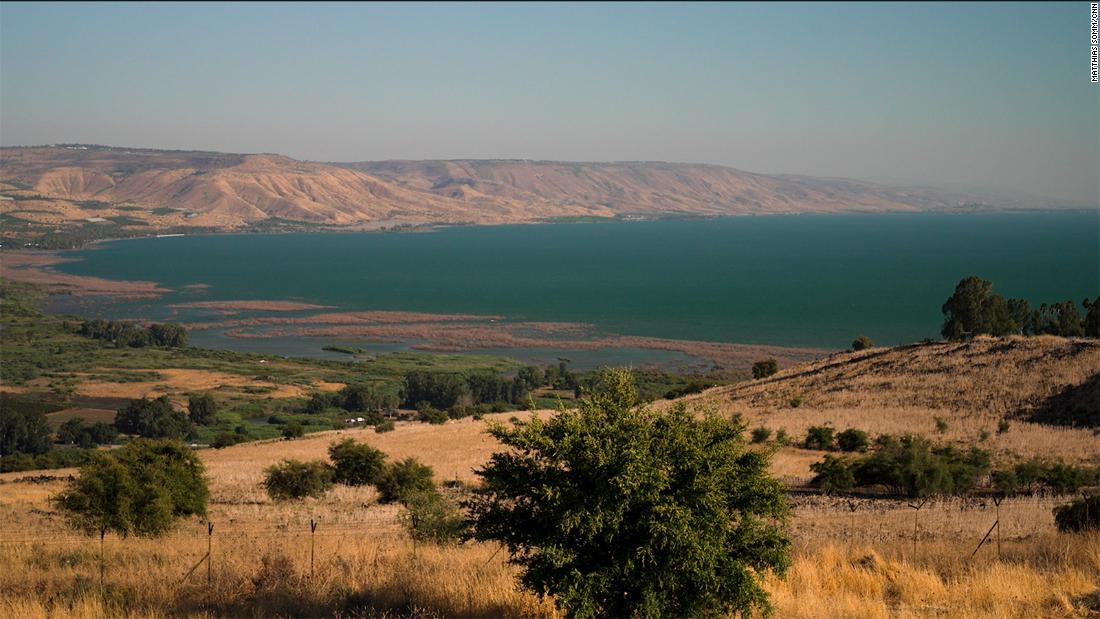
Climate change and unsustainable water management are leaving lakes dried up all over the Middle East and beyond, but the Israeli government is hopeful it has a solution: It plans to pump water from the Mediterranean sea, take the salt out of it and send it across the country to top up the lake when needed.
It’s a dramatic change for the Sea of Galilee, called the Kinneret in Hebrew, which once pumped out nearly all of Israel’s drinkable water. The water will now flow in the opposition direction.
Israel has plenty of expertise in desalination. As a water-insecure nation, it has for more than two decades been taking seawater from the Mediterranean and treating it through a process called reverse osmosis, essentially taking the salt out of the water to make it drinkable. It’s a process that other parts of the world, including California, have turned to in times of drought, but in Israel, it’s an everyday reality. Five desalination plants along the coast now provide nearly all the tap water for the country’s 9.2 million people.
The new project looks a little underwhelming — a 1.6-meter-wide water pipe laid across 31 kilometers — but it’s the first of its kind. It will take the desalinated water and pump it through the Tsalmon stream that feeds the lake.
When he first heard of the project, Noam Ben Shoa, head engineer at Israel’s national water company, Mekorot, thought it was a strange idea.
“But very soon, we understood the value it has to the national market itself,” he told CNN at a construction site for the pipe.
It also helps with the development of agriculture in the wider region, he said, as well as relations with neighboring Jordan.
Israel has a long standing agreement with Jordan to sell tens of millions of cubic meters of water annually to the kingdom. In 2021, the two countries signed a new agreement where Jordan would receive 200 million square meters of desalinated water a year from Israel — about 20% of Jordan’s water needs — in return for solar energy to help power Israel’s electric grid. Emirati companies would build 600 solar power plants in Jordan to generate the energy.
Within months, the new $264 million pipeline is expected to be functional, and will be able to move 120 million square meters of water per year, but will only pump to the lake when necessary, Ben Shoa said.
“The uniqueness of this project is that it gives us almost infinite flexibility,” he said. “We can basically take the water where it is available … and just divert it and transport it to wherever it is needed. In the population centers, for agricultural or industrial uses as well.”
Getting ahead of the crisis
The need to do things radically differently hit home during the most recent, five-year drought, which ended in 2018. Despite a ban on pumping water from the lake, water levels here still reached a record low. But it’s also what’s to come with the worsening climate crisis that has pushed Israel’s water authority to intervene now.
“They looked into the future climate change, and what’s going to happen [with] rainfall in this area, and also looked at the increase in population and projected increase in demand of water,” Gideon Gal, senior scientist and head of the Kinneret Limnological Laboratory, told CNN. “And they realized that 30, 40 years from now, there’s going to be a serious problem in maintaining [water] levels in the lake, and maintaining water quality unless something is done.”
But that something had never been done before. Even if salt is removed, the makeup of the water is also different in other ways, Gal said.
“When you mix desalinated water with natural water, you see an impact on the biology in the experiments,” Gal said. “We’ll be bringing things to the lake that may not exist naturally.”
But so far, Gal says their experiments show the new water won’t cause a huge impact on existing species. In fact, it may even help the lake combat the effects of climate change by causing a higher rate of water turnover, which helps prevent too much bacterial growth, and could help cool the water’s temperatures.
Even with the potential benefits, Gal said he wished the lake didn’t need any human intervention.
“But given what we think we know about climate change, and what’s going to happen in the lake,” Gal said. “The risk of introducing desalinated water is a risk that is worthwhile taking.”
